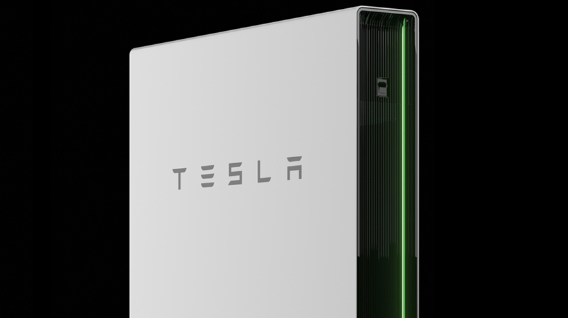 Off-Grid Solar Australia
Off-Grid Solar Australia

“Let’s discover how Tesla’s revolutionary Powerwall has transformed solar energy storage, enabling off-grid living now.”
In 2010, a rather obscure company named Tesla embarked on a journey, setting up a modest factory in California, and delved into crafting electric cars driven by lithium batteries.
Back then, few paid much heed to this endeavor, and those who did often labeled them as audacious dreamers. After all, lithium batteries were deemed too costly, manufacturing complexities were substantial, and the idea of storing a viable amount of electricity seemed implausible.
The introduction of the Tesla Powerwall has ignited a revolution in the realm of solar energy storage. This ingenious device presents a straightforward yet potent solution – it seizes surplus solar energy during daylight hours and employs it to fuel your home during the night.
Since the launch of Powerwall version 2 in 2016, Tesla has remarkably sold over 100,000 battery packs. At times, demand even surpassed their production capabilities.
Nonetheless, a primary limitation of the Powerwall was its exclusive compatibility with properties linked to the grid – essentially combining solar panels and batteries with the safety net of conventional electrical power. However, the landscape has evolved anew.
Tesla recently unveiled a fresh iteration of the Powerwall tailored for off-grid usage. This innovation empowers individuals residing in stand-alone properties to embrace a sustainable lifestyle driven by solar energy and the capabilities of lithium battery storage.
But how exactly does this off-grid Powerwall function? Is it a suitable choice for your secluded dwelling? Let’s find out!
The Off-Grid Powerwall: A Closer Look
In many aspects, the off-grid Powerwall mirrors its grid-connected counterpart. Sunlight harnessed by solar panels energizes your abode throughout the day. Any excess solar energy generated finds a haven within the batteries. When your power consumption eclipses your solar production, the Powerwall intervenes, seamlessly supplying surplus energy to sustain an uninterrupted power flow.
Yet, a pivotal divergence with the off-grid variant is that, in the absence of a grid connection, your batteries rely exclusively on solar energy for replenishment. This underscores the necessity for a potent solar array, capable of fulfilling your daily energy requirements and concurrently charging the batteries, even during prolonged bouts of unfavorable weather.
To assuage concerns, every Off Grid Energy Powerwall system incorporates an automated generator, ensuring an ever-present fallback power source. This is coupled with Austrian-made Fronius solar inverters, chosen for their reputation as the epitome of advancement and reliability in the market.
Quantifying Power Storage
Each Tesla battery boasts a capacity of 13.5 kilowatt-hours (kWh). An off-grid setup mandates a minimum of two Powerwalls, translating to a minimum storage capacity of 27 kWh.
Matching Battery Capacity with Consumption
In Australia, the average household consumes approximately 18 kWh of electricity daily. Hence, adhering to averages, two Powerwalls often suffice for energy-efficient homes. If your abode encompasses features like air conditioning, water pumps, a pool, or multiple refrigerators and freezers, additional Powerwalls and heightened solar capacity may be warranted to cater to your energy demands.
G’day, Australia! We’re here to shake things up in the energy world, right? We’ve got these ripper solar systems, decked out with the latest Sungrow and Deye inverters and those beaut Sungrow and Pylontech lithium batteries. They’re a real game-changer for places like Ballarat, Victoria, and all over Oz! Our Top Solar Gear Going All …
Continue reading “Givin’ Aussie Homes a Fair Go with Top-Notch Solar Tech”
1. Jinko Solar Panels: 2. Trina Solar Panels: 3. SunPower Solar Panels: Conclusion When choosing solar panels, consider factors such as efficiency, durability, warranty, and budget. Jinko offers cost-effective and reliable options, Trina provides a balance of performance and value, while SunPower stands as a premium choice with top-tier efficiency. Each brand caters to different …
Continue reading “Comprehensive Solar Panel Review: Jinko, Trina, and SunPower”
1. Pylontech Batteries: 2. PowerPlus Energy Batteries: 3. BYD Batteries: 4. Tesla Powerwall: Conclusion When selecting a solar battery, factors like capacity, compatibility, longevity, and budget play crucial roles. Pylontech, PowerPlus Energy, BYD, and Tesla offer diverse options catering to different needs and preferences. Whether for a small residential setup or a larger, more complex …
Continue reading “In-Depth Review of Solar Batteries: Pylontech, PowerPlus, BYD, and Tesla”
Inverter Equipment Review: Sungrow, Deye, Victron, and Selectronic 1. Sungrow Inverters: 2. Deye Inverters: 3. Victron Energy Inverters: 4. Selectronic Inverters: Conclusion Each of these inverter brands – Sungrow, Deye, Victron, and Selectronic – offers unique strengths suited to different solar energy needs. Your choice should depend on your specific requirements, whether it’s for residential, …